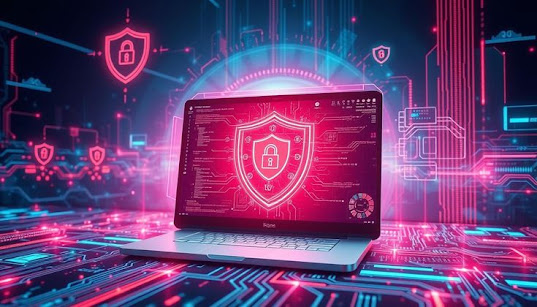Top Cyber Threats You Must Watch Out for in 2025
Top Cyber Threats to Watch Out for in 2025
Cybersecurity isn’t just a buzzword anymore—it’s a necessity. As we move deeper into a digitally connected world, the threats we face are evolving at a rapid pace. From AI-powered attacks to sophisticated social engineering, 2025 presents a new landscape of risks that everyone—from individuals to businesses—should be aware of.
This post explores the most pressing cyber threats you need to watch out for in 2025 and offers guidance on how to stay protected.
A. AI-Driven Phishing Attacks
Phishing has always been one of the easiest ways for attackers to steal sensitive information. But in 2025, it's no longer about obvious fake emails.
With the rise of AI-generated content, cybercriminals are creating highly convincing messages that mimic the writing style of your contacts or favorite brands. Some even use voice cloning and video deepfakes to trick users.
Protection Tips:
-
Never click on suspicious links, even if they seem to come from trusted sources.
-
Use advanced email filters.
-
Enable multi-factor authentication (MFA) wherever possible.
B. Deepfake-Based Social Engineering
Deepfake technology has improved dramatically. Hackers are now using synthetic voices and videos to impersonate CEOs, managers, and even family members to manipulate people into sending money or sensitive data.
These types of social engineering attacks are incredibly difficult to detect because they seem so real.
Protection Tips:
-
Be skeptical of unexpected video or voice messages.
-
Always confirm identity via a second method (e.g., a phone call).
-
Train employees and family members about the risks.
C. Ransomware 3.0
Ransomware isn’t going away—in fact, it’s becoming more targeted and damaging. In 2025, ransomware groups focus on critical infrastructure, small businesses, and cloud data.
Some attackers even threaten to publish your data unless you pay, which adds a layer of pressure.
Protection Tips:
-
Backup your data regularly to offline or secured cloud services.
-
Use endpoint protection and monitor for unusual behavior.
-
Never rely on a single layer of defense.
D. Cloud Account Takeovers
As more services move to the cloud, attackers are shifting focus to breaching cloud-based platforms. If they access your cloud storage or SaaS accounts, they can steal data, inject malware, or impersonate your business.
Weak passwords, reused credentials, or lack of 2FA make this easy.
Protection Tips:
-
Always enable two-factor authentication on cloud accounts.
-
Monitor for suspicious logins or access from unknown locations.
-
Use strong, unique passwords for each service.
E. IoT Exploits and Smart Home Vulnerabilities
Smart homes and wearable tech are everywhere in 2025. But each connected device is a potential entry point for hackers. Many of these gadgets still lack proper security features or receive irregular updates.
Protection Tips:
-
Change default passwords on all smart devices.
-
Keep firmware updated.
-
Use a secure, isolated Wi-Fi network for IoT devices.
F. Mobile Malware and Fake Apps
Our smartphones are goldmines of personal data, and attackers know it. Fake apps disguised as games, utilities, or finance tools are spreading malware that steals data, tracks behavior, or even records calls and messages.
Protection Tips:
-
Only download apps from official stores (Google Play, App Store).
-
Check reviews and developer history before installing anything.
-
Avoid giving apps unnecessary permissions.
G. Supply Chain Attacks
Even if your own systems are secure, a breach in a service you depend on can put you at risk. These supply chain attacks target software vendors, cloud providers, or managed service providers to infiltrate their customers indirectly.
Protection Tips:
-
Evaluate the security posture of your vendors.
-
Apply security patches as soon as they’re available.
-
Use tools that monitor third-party access.
H. Quantum Computing Threats (Emerging Risk)
Quantum computing isn’t mainstream yet, but security experts warn that it could break today’s encryption standards once it matures. In 2025, some governments and large organizations are already preparing for this possibility.
Protection Outlook:
-
Post-quantum cryptography is being developed, but not widely adopted yet.
-
Keep an eye on how tech platforms evolve their encryption methods.
Final Thoughts
Cybersecurity in 2025 is no longer about just installing antivirus software. The threats are smarter, faster, and harder to spot. Staying safe requires a combination of smart habits, up-to-date tools, and ongoing awareness.
No matter who you are—student, professional, business owner—understanding these emerging threats gives you the power to respond wisely. And in today’s digital age, being informed is your first line of defense.




Comments
Post a Comment